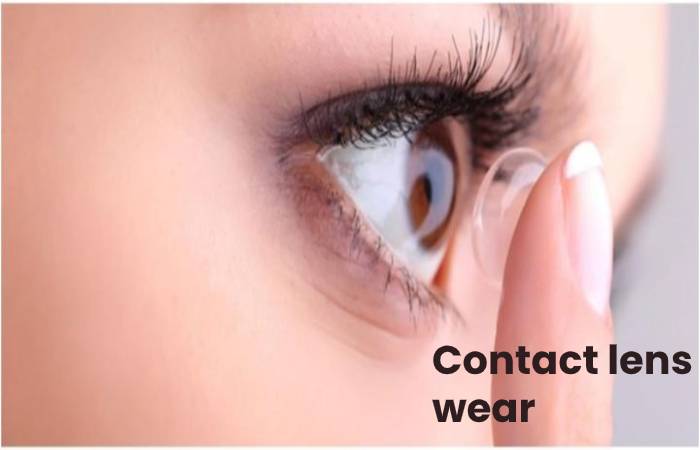Dry eyes cause discomfort in people who suffer from it. Tearing, red-eye, and difficulty in vision are some symptoms of this syndrome that we share with you today.
Among people over 40, it observed that up to 11% report that their eyes are dry. This alteration seems more frequent in the female population and is strongly associated with age and aging.
In turn, 30% of the consultations made in ophthalmological visits in Spain are for dry eye. This discomfort can have several causes, and some of them are pathological. Let’s learn more about this topic.
Table of Contents
What are Dry Eyes?
The dry eye is a medical term that refers to a syndrome in reality. That is, to a set of signs and symptoms. In this case, it caused by multiple factors, and it is a loss of the hydration balance of the eye. This lack of hydration causes inflammation or damage to the ocular surface, which results in an alteration of vision and different discomforts that decrease the quality of life of the affected person.
Much of the eyeball is water, so it stands to reason that without sufficient fluid, there is no correct functionality. On the other hand, the eyes may be dry without dry eye syndrome. For this reason, it is necessary to pay attention to the risk factors, the degree of exposure, and the accompanying symptoms.

Symptoms of Dry Eyes
The symptoms of dry eye are varied and often unspecific. We have, as an example, the sensation of itching or grit, which cannot be associated with a single disease. This leads to eye irritation that leads to scratching. There is also often tearing that develops from eye strain.
It is the sensation of not having the strength to hold the gaze in reading or on a screen. Even the effort that must make to focus at a distance is affected. When resected, the eyes tend to redden, specifically in the conjunctiva area. Inflammation accumulation blood in the tissue is not in the form of diffusion, like a bruise, but under the appearance of red lines.
Why do the Eyes become Dry?
The eyes can become dry for external reasons or causes related to intrinsic alterations. We are going to divide these two groups to tell you, more in detail, what they are.
Internal Disorders of the Eye
One of the leading causes of the dry eye lies in the lack or deficit of tears. This response to the following factors:
- Low production of tears.
- Poor tear quality or rapid evaporation: due to pathologies, such as dysfunction of the Meibomian glands. This disease causes abnormal lipids that make up the tear. This makes them evaporate faster, being less dense.
- Intense Eyelid opening disorder: When the eyelids close incompletely, or there are anatomical deformities, the ocular surface is exposed, and the tear evaporates quickly. This involves conjunctival or corneal injuries.
- Low blink frequency: prevents regular tear exchange and distribution on the surface of the eye. This phenomenon has increased in recent years due to the use of computers and other screens.
External or Independent Alterations of the Eye
Not only eye dysfunction or abnormalities in the structure of the eye can cause it to become dry, but there are also pathologies of the organism or environmental factors that condition the appearance of this problem. Some are as follows:
- Hormonal alterations: the hormonal changes produced during adolescence and menopause cause an alteration in the composition and quantity of the tear.
- Advanced age: deterioration of the meibomian glands occurs with age, decreased body water, and automatic blink response.
- Contact lens wear: Dry eye syndrome has observed to be 12 times higher in people with contact lenses compared to the general population.
- Consumption of antidepressant and antihistamine drugs: these drugs act on neuronal receptors that, in addition to performing the desired function, have adverse effects, such as the hydration deficit of the eye.
- Treatment with chemotherapy or radiotherapy: these oncological therapies destroy the glands as a secondary reaction.
- Environmental factors: An example of this can be air conditioning, dry environments, heating, or pollution in cities. All the particles in suspension adhere to the eyeball hindering the action of the tear.
- Food: disorders of the ocular surface may be due to a lack of vitamin A. Lack of this nutrient reduces the tear film breaking time.
- Allergic diseases: people hypersensitive to substances are more prone to allergic conjunctivitis. This disorder can damage or ulcerate the cornea.

Is prevention there to Prevent the Eyes from Drying out?
To avoid reaching the situation where the eyes are dry, it is essential to take specific measures that, being simple, reduce the possibility of the syndrome appearing. It is not a minor task, since the associated visual loss can make everyday life difficult.
One of the necessary preventive actions is to limit environmental factors, especially when there is dust in the air. Besides, your eyesight protected from artificial light from computer screens, mobiles, and tablets.
In the diet, foods with vitamins A, E, and C included. On the other hand, omega-3 fatty acids have anti-inflammatory characteristics that make them ideal for reducing the signs associated with dry eye. If you use contact lenses, hygiene is essential. The care of these devices imposed, not only to avoid conjunctival infections but also to avoid irritating the eyeball.
